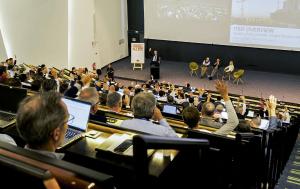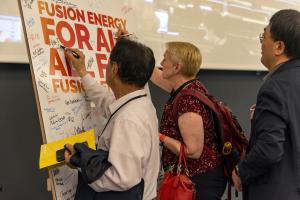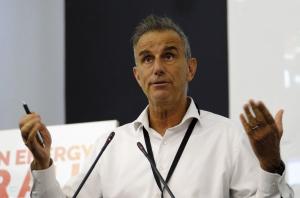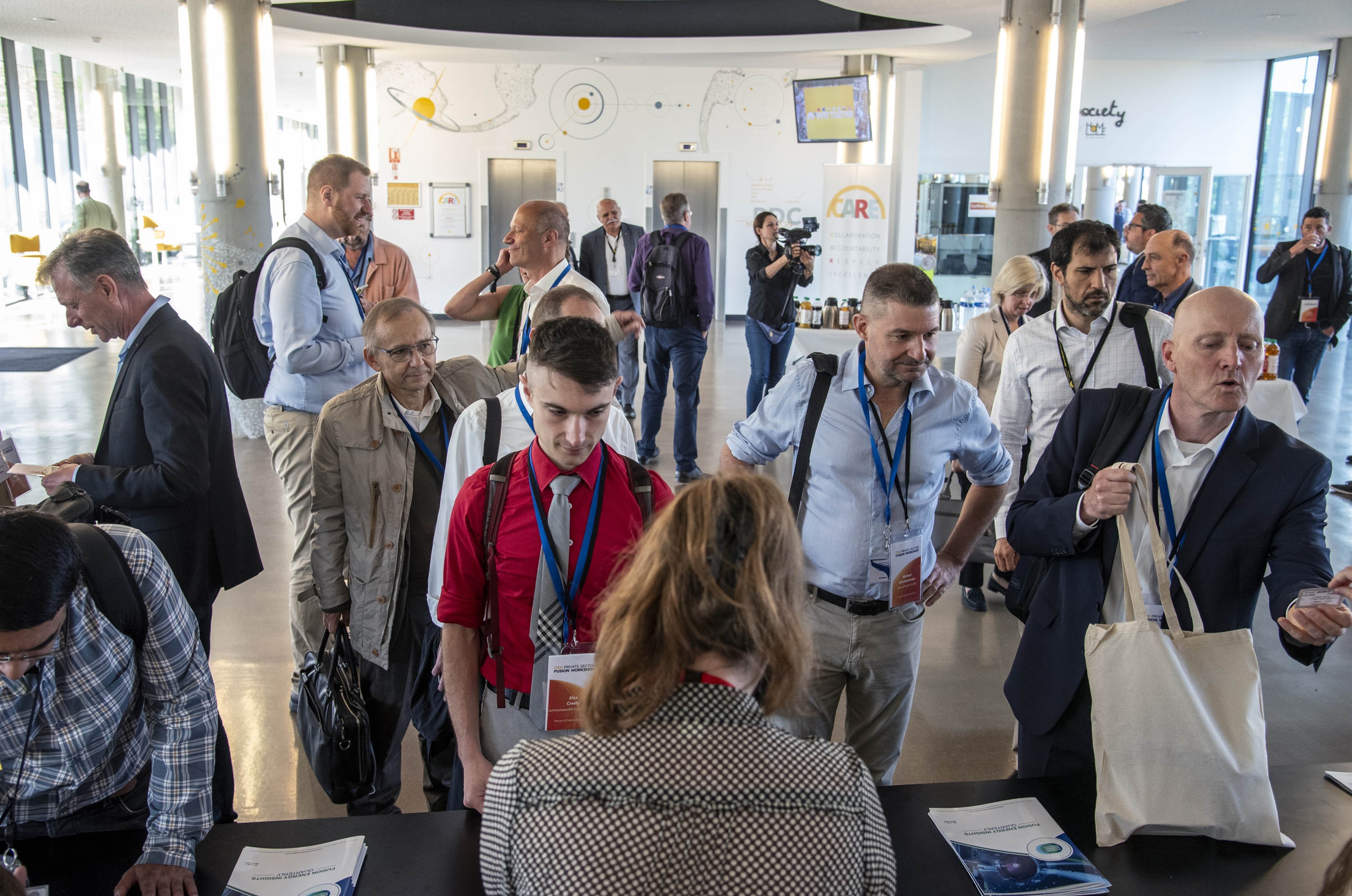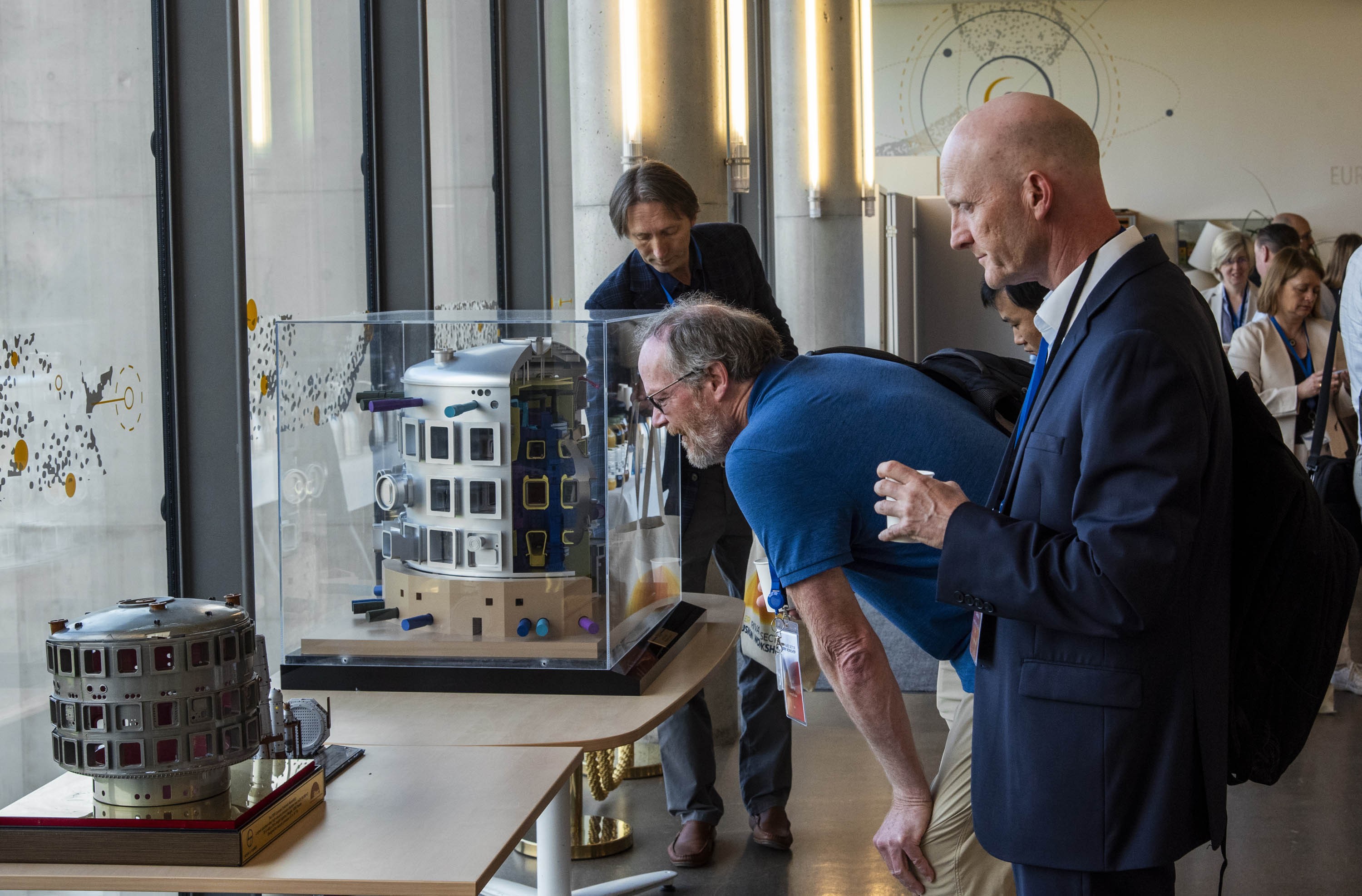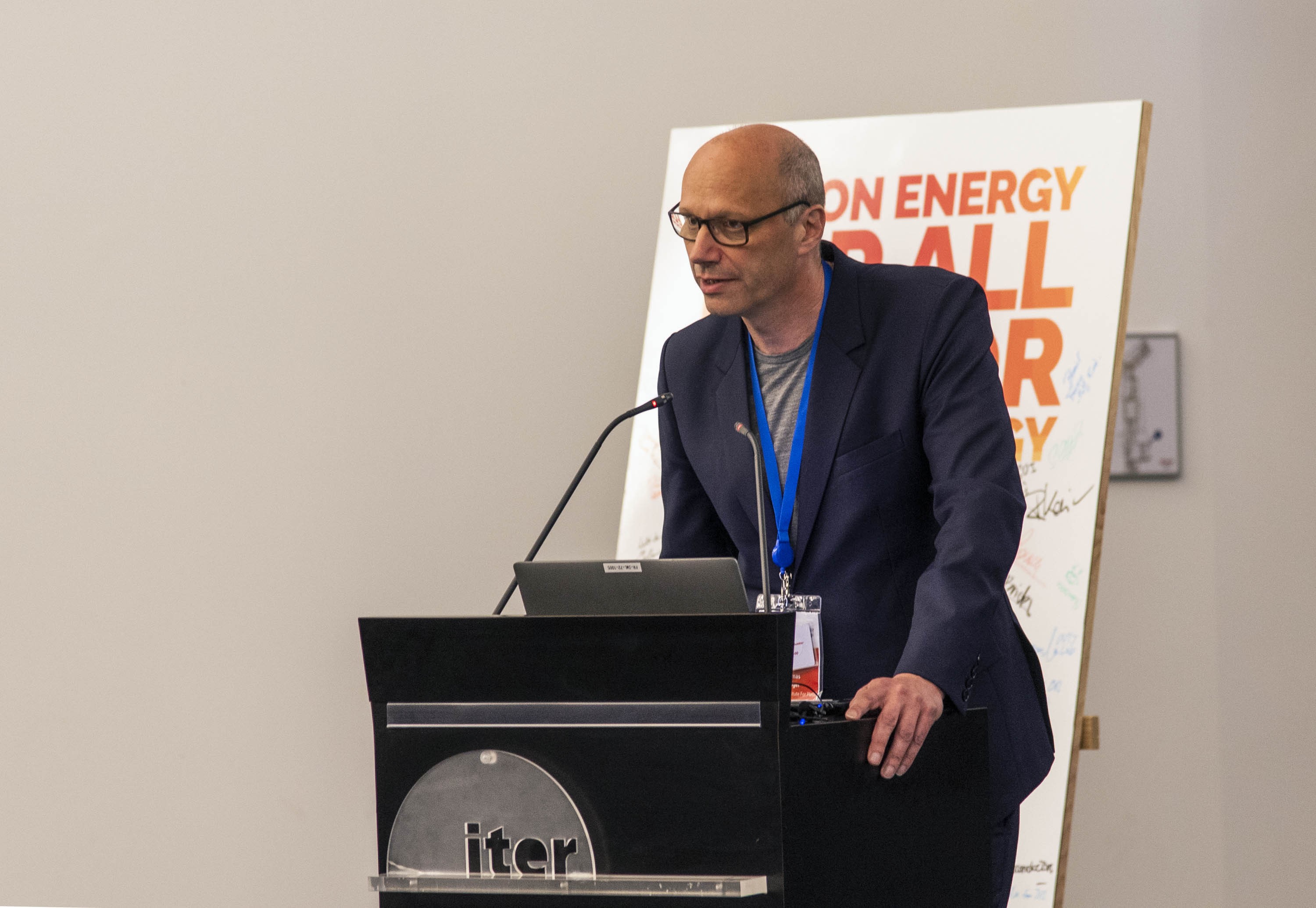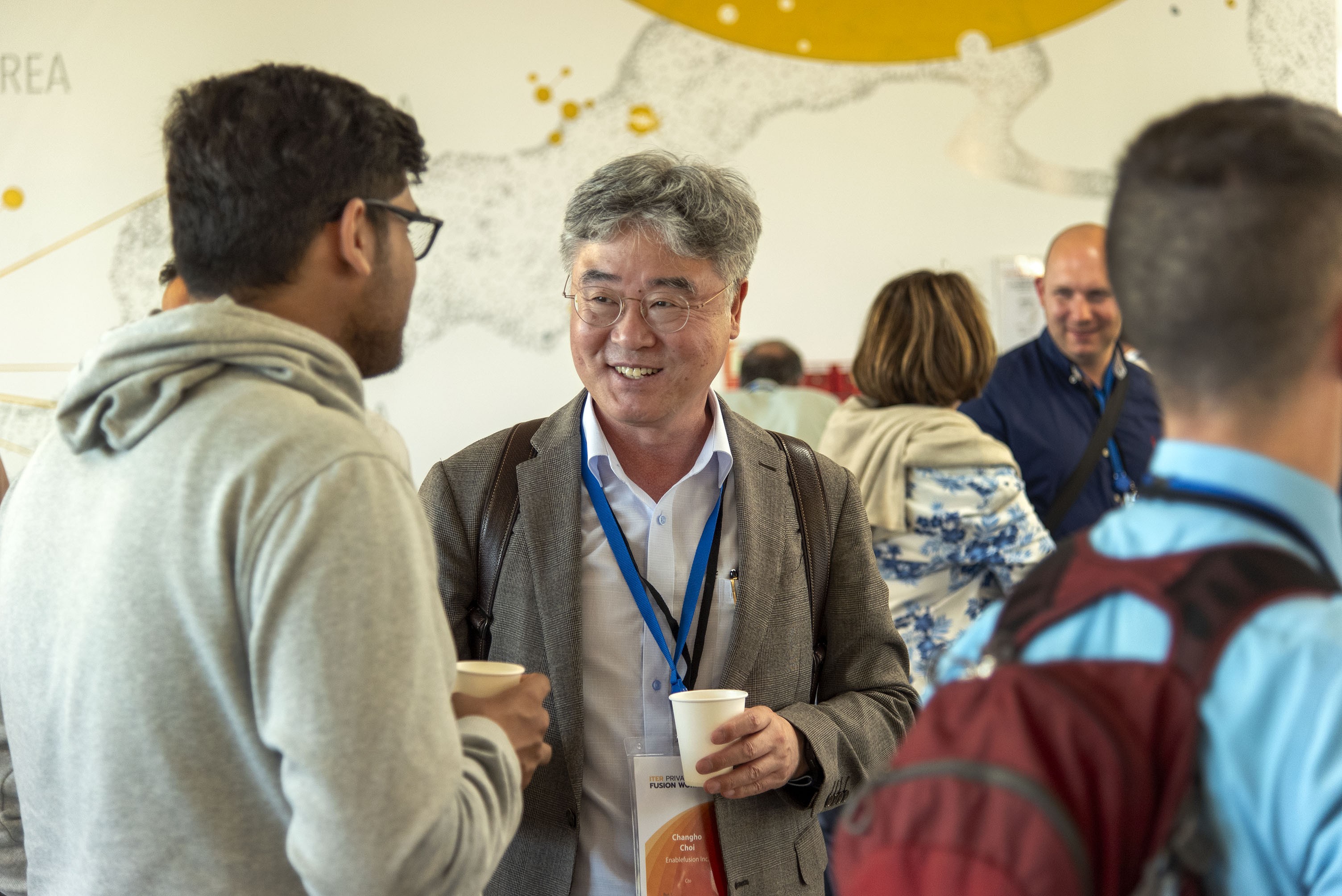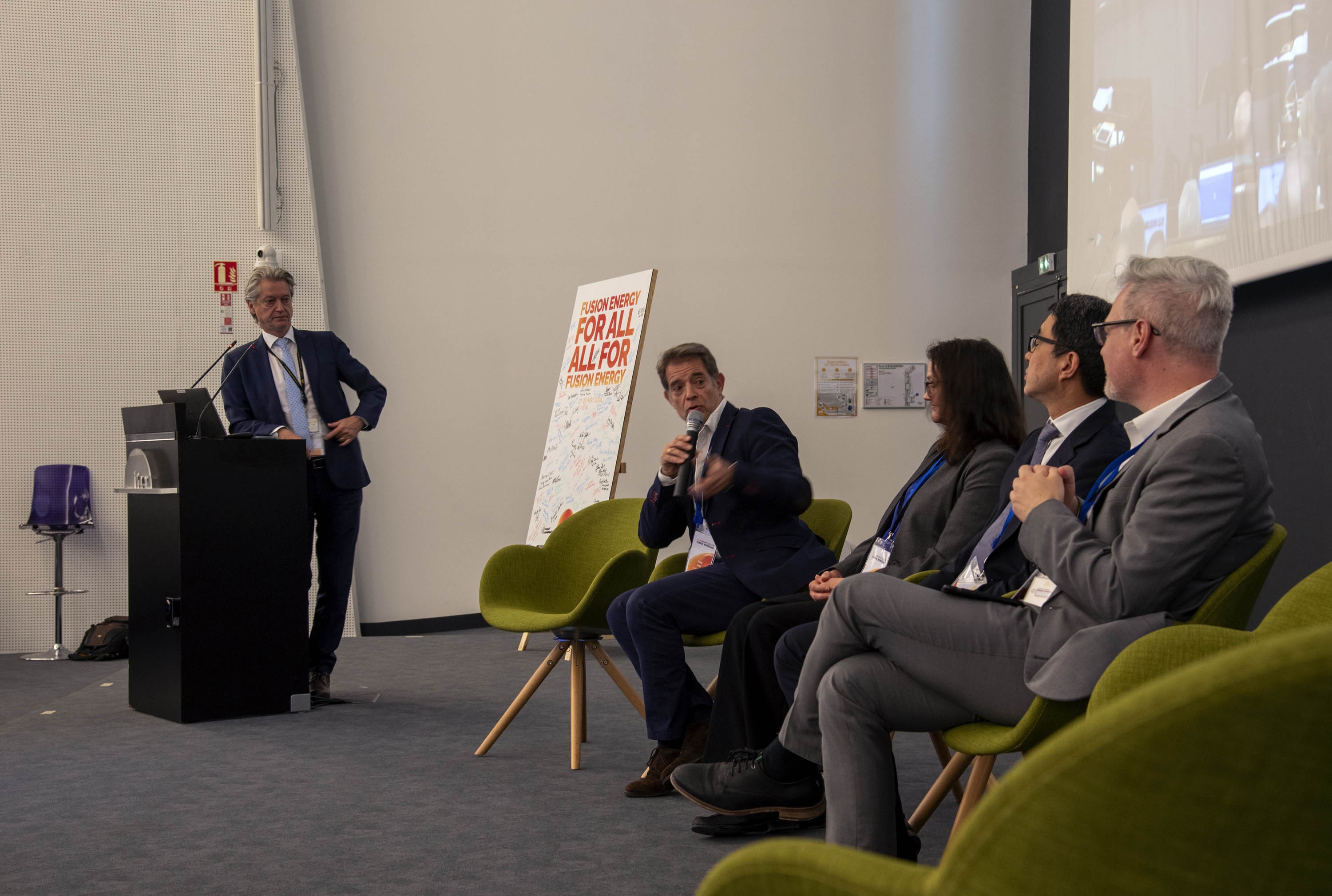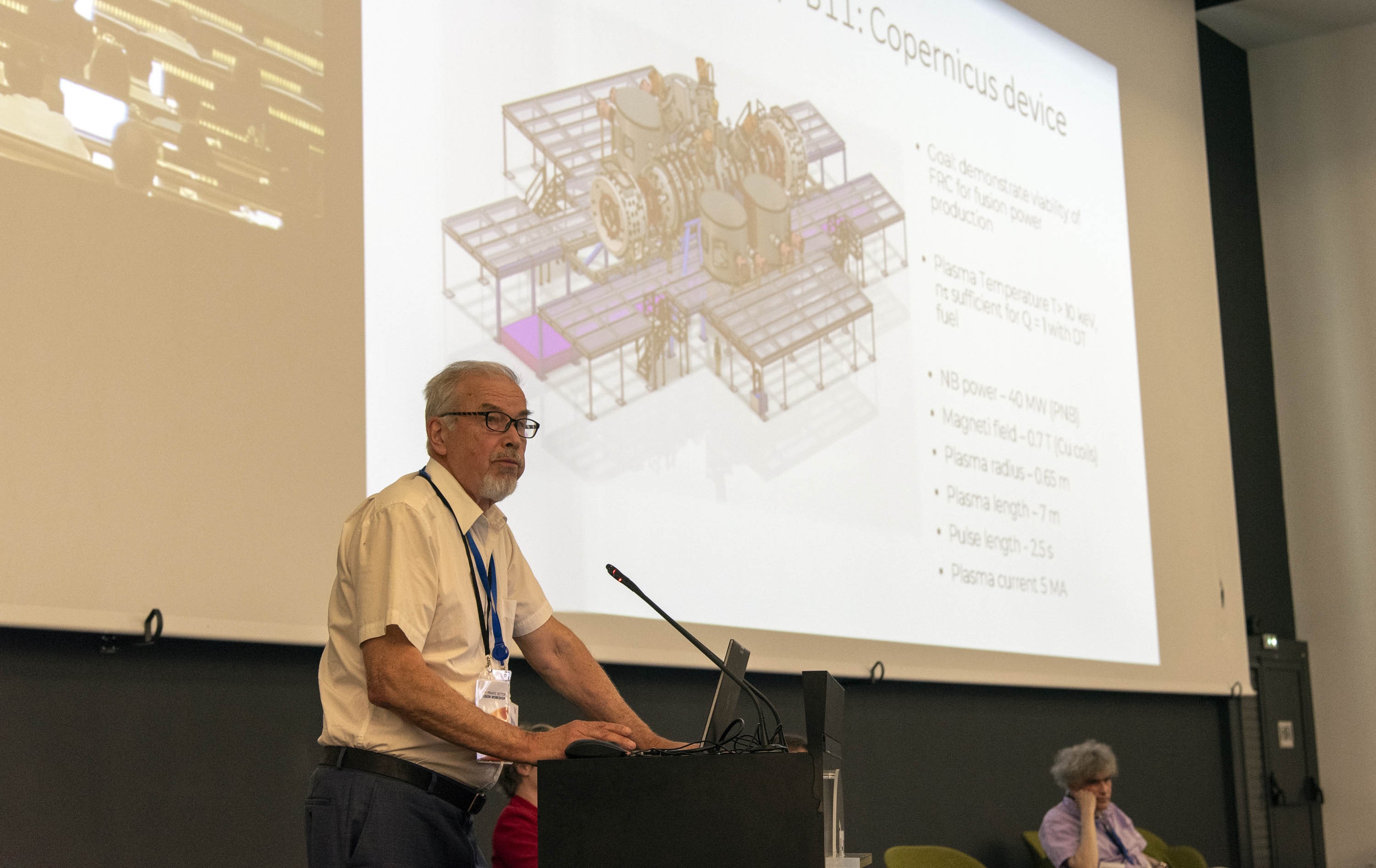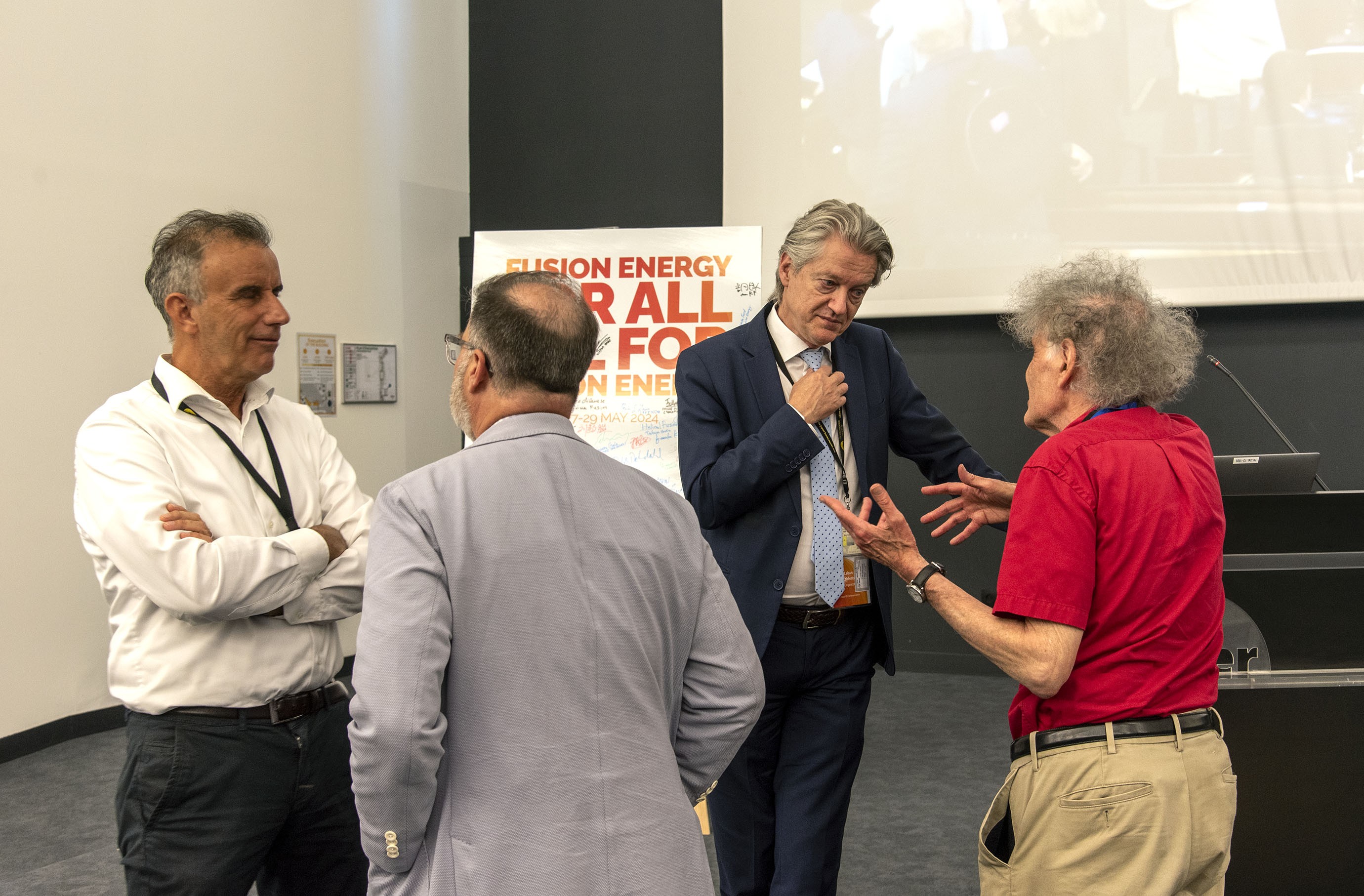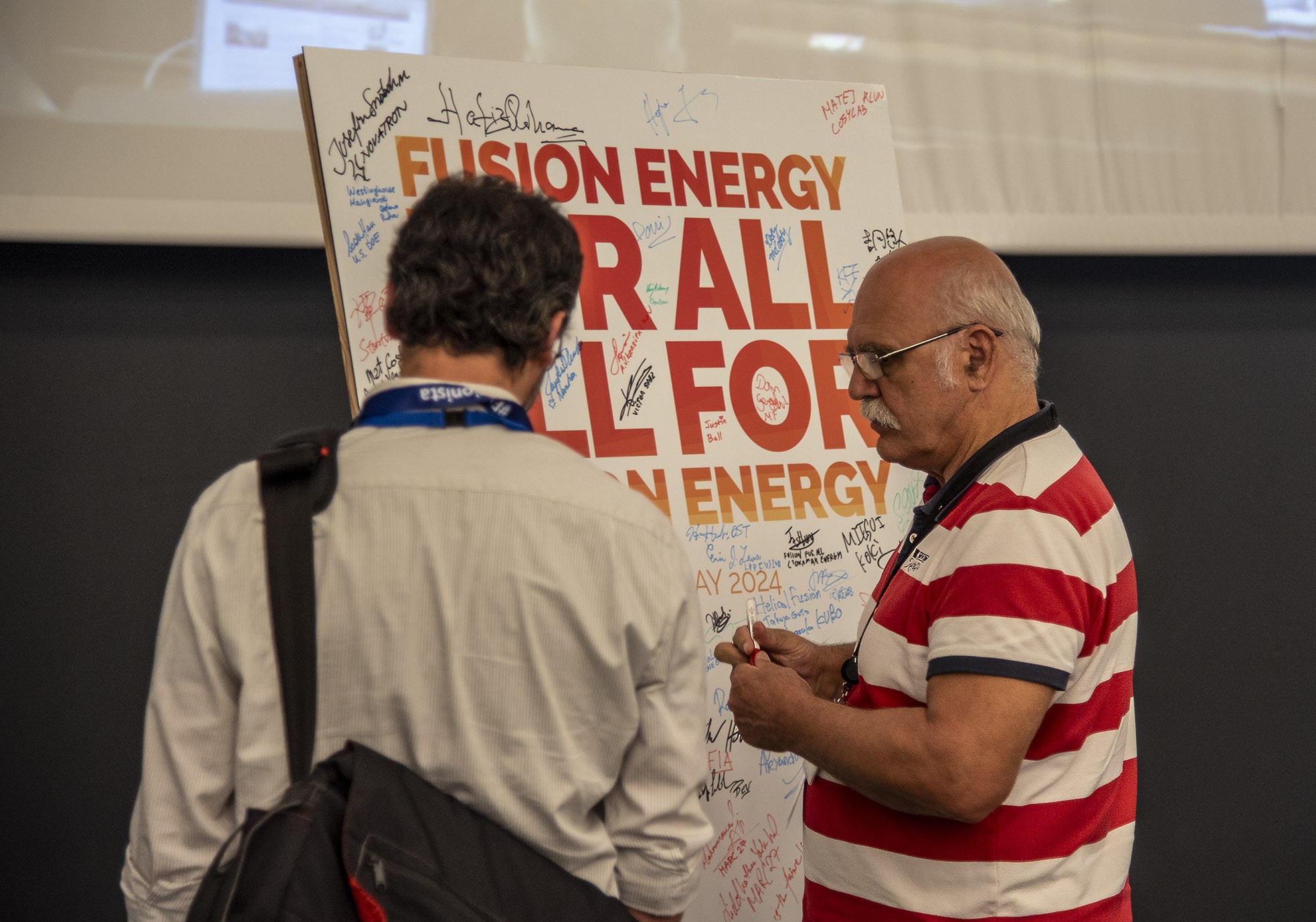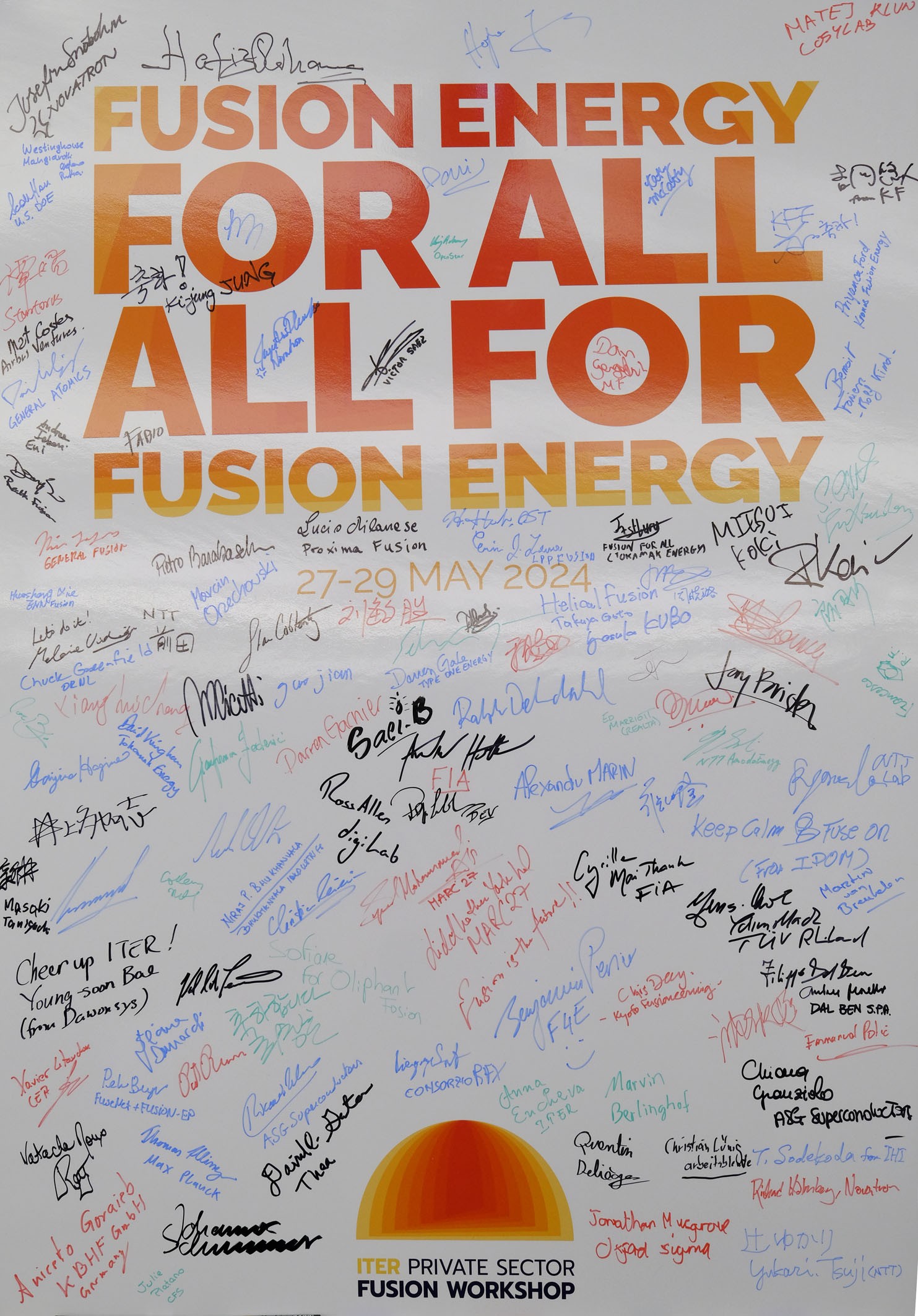"How can ITER help?"
There are many ways to approach the harnessing of fusion energy: one is to optimize or simplify existing concepts; another is to exhume long-abandoned solutions and, thanks to the progress of technology and a better understanding of physics, breathe a new life and pertinence into them. Another yet is to design and build more exotic devices, founded on principles and physical arrangements no one has ever thought of. Fuelling strategies can also diverge; when most devices stick to the well-proven potential of the two heavy hydrogen isotopes deuterium and tritium, others are pursuing the Holy Grail of "aneutronic" proton-boron or helium-3 fusion. Whatever the options being pursued, the main actors in the different projects that have emerged in recent years were onstage at ITER last week to present their hopes and expectations: the first ITER Private Sector Fusion Workshop ever organized brought together close to 50 CEOs and senior scientists from private fusion startups, along with industry suppliers and representatives from public laboratories, the ITER Domestic Agencies, and the ITER Organization—all in all, approximately 350 stakeholders seeking to accelerate what is probably the most ambitious and imperative venture in humankind's history.
Seventy years ago, the fusion communities in the East and West responded to the scope and complexity of the challenges they were facing by establishing a form of international collaboration. The 1956 visit that Soviet leader Nikita Khrushchev and Igor Kurchatov, the father of Soviet nuclear research, paid to the Atomic Energy Research Establishment in Harwell, in the United Kingdom, was the watershed moment that opened the way to the collaborative, worldwide sharing of knowledge and experience that has characterized fusion research ever since. In some degree and despite the immense progress that fusion has accomplished, the situation today resembles that of seven decades ago: two "systems" or "communities," public and private this time, are now coexisting, engaged in the same quest and addressing similar issues.
There are currently close to 50 privately funded fusion startups in 12 countries. Over the past five years, they have attracted more than 5.5 billion euros in private investment and the majority of them harbour ambitions to deliver fusion-generated electricity to the grid by the end of the 2030s, or even before. However outlandish the claim might appear, the timeline of fusion startups is not central to the present dynamics. If they are considered valuable by the established fusion community, it is because of their intrinsic nature—they are nimble and daring, they do not risk much even when exploring unorthodox avenues, and they can blaze new trails in neglected territories.
Why is this all happening now? "Because fusion is ready," said Andrew Holland, the CEO of the Fusion Industry Association, in his address to the workshop participants. "It is ready thanks to 70 years of public R&D. The startups know they are standing on the shoulders of giants." Foremost among these "giants" is the ITER international collaboration that has largely completed the monumental task of designing and manufacturing the most powerful fusion device ever conceived and is presently in the process of assembling it. During this decades-long process, a formidable mass of experience has been accumulated, which ITER is eager to share in order to accelerate global progress. What ITER offers to put at the private sector's disposal is "information that wouldn't be available in conferences and seminars," declared ITER Director-General Pietro Barabaschi. "Information on what we did and why we did it, and, maybe even more valuable, on what we did and shouldn't have done..." As summarized by ITER Head of Communication Laban Coblentz, who was instrumental in the genesis and organization of the workshop, "this conference is basically about: How can we help?"
Having presented their approaches, provided the technical specifications of the devices they intend to build, named the technical breakthroughs they expect, and shared their timelines, the major startups participating in the workshop responded to that question. Accessing plasma modelling codes such as SOLPS-ITER and participating in the International Tokamak Physics Activity (ITPA) came out on top of the wish list. Sharing information on diagnostics systems, material properties and remote handling was also in high demand. Some suggested seconding or exchanging staff; others produced long lists that included support for the design of plasma-facing components, heating systems, and magnets, and also collaboration around procurement and regulatory aspects and the development of a "common narrative"...
The startups were not begging. And ITER was not "granting." Rather, the private companies and the public giants (several large national labs and research centres participated in the workshop) were, in the words of General Atomics senior scientist David Weisberg, "starting a conversation" and laying the foundation for an extended, open collaboration for the benefit of all. "Our DNA is to support the development of fusion," said Pietro Barabaschi in his closing statement. "It is not our ambition to coordinate you; we want to share our knowhow and—even more important maybe—our 'know-how-not.' We will do our best to make ITER your home."
"Fusion," added the ITER Director-General, "is driven by people who want to make a difference in the world." That was the case seventy years ago when fusion was an elusive dream. And that is the case today as fusion, if not completely "ready," is on its way to delivering.
See scenes from the workshop in this video. Or listen to a special episode of The ITER Podcast.

